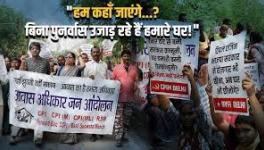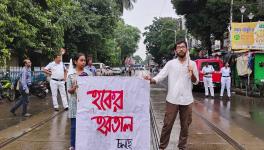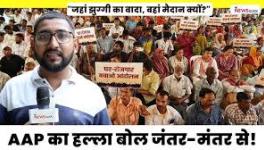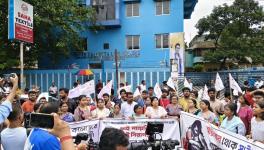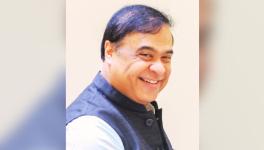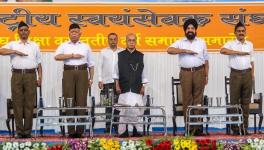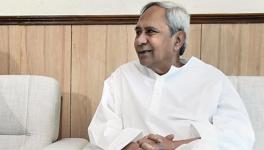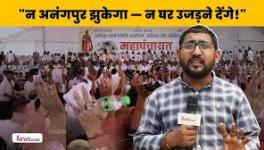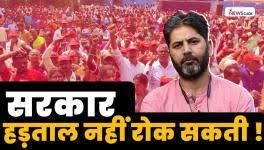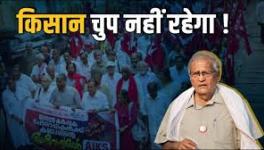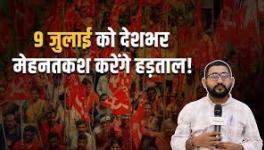Bengal Elections: Will Mamata’s Key Role in Setting Political Narrative See a Dent?

Image Courtesy: Flickr
Kolkata: The next West Bengal Assembly elections are almost 11 months away. If the schedules of the past two Assembly elections are any pointers, the exercise is likely to be spread over five weeks from March-end and results will be declared in May first week. Campaigning peaks between mid-February and mid-March.
But the situation is already somewhat different for the 2026 battle. West Bengal is witnessing the two major parties -- ruling Trinamool Congress (TMC) and aspirant for office, Bharatiya Janata Party (BJP) – engaged in a bitter war of words since March this year.
For BJP, an opportunity to target TMC came its way in August 2024 when widespread student-led protests forced then Bangladesh Prime Minister Sheikh Hasina to flee the country and land in New Delhi on August 5 with prior arrangement. As the protests in the neighbouring country intensified and anti-Awami League forces began to target the minorities, particularly Hindus, BJP widened the scope of its anti-Mamata stance, which was hitherto restricted to holding her responsible for continuing infiltration of Bangladeshi Muslims into West Bengal.
Stretching a point, BJP faulted the West Bengal Chief Minister for keeping silent on the attack on Hindus in Bangladesh and termed her stance as part of her “minority appeasement policy” to get en bloc support of Muslims, who account for 30% plus of the electorate.
Perhaps, for the first time the saffron camp described Mamata Banerjee as being “anti-Hindu.” Leader of the Opposition (LoP) in the Assembly, Suvendu Adhikari, who defected to BJP from TMC before the 2021 elections, has been leading the anti-Chief Minister charge.
The outbreak of riots on April 11 and 12 in Muslim majority Murshidabad district, for which the Waqf (Amendment) Act, 2025, was the trigger, degenerated into a large-scale attack on Hindus. The Calcutta High Court urgently heard a petition filed by Adhikari seeking deployment of Central forces in the district.
The two-judge bench of Justice Soumen Sen and Justice Raja Basu Chowdhury granted the petition, observing that the situation was grave and volatile … “a Constitutional court cannot be a mute spectator and embroil itself in technical defences when the safety and security of the people are in danger.” (Murshidabad district shares a 125.35-km-long border with Bangladesh; of which 42.35 km is land border and the remaining is riverine along the Padma river and its streams).
The state administration found itself on the defensive, TMC’s elected representatives did little to reach out to panic-stricken Hindus and aid the district administration. Much to the Chief Minister’s discomfiture, Governor C V Ananda Bose visited the district on April 18 and 19, ignoring her advice to delay the visit. Not only that, Bose described the situation as “far from normal”, even a week after violence broke out, which left three people dead and at least 15 police personnel injured.
Apart from Murshidabad district, communally sensitive Bhangar in the South 24 Parganas district was witness to violence on the anti-Waqf law issue on April 13. There, Indian Secular Front (ISF) leader Naushad Siddique has been able to establish a strong base, considerably weakening TMC’s hold.
Thus, first Bangladesh and later Murshidabad and Bhangar, came in handy for the saffron camp to strategise a political offensive. For the first time since TMC’s assumed office in 2011, BJP had the format of a political narrative against Mamata Banerjee. There is unanimity in political and administrative quarters that the state police found itself totally unprepared to tackle the situation in Bhangar. Intelligence gathering has been a casualty for the past several years.
In addition, the spate of corruption cases against senior TMC ministers and party functionaries have tarnished Mamata’s image, both as Chief Minister and party chief. The legal battle spearheaded by well-known lawyer and CPI(M)’s Rajya Sabha member Bikash Ranjan Bhattacharya against the massive teacher recruitment scam has been proving politically costly for TMC. This, in addition to the still raging controversy and protests on the months-old issue of the rape and murder of a junior lady doctor at the R G Kar Medical College and Hospital, have damaged her credibility even beyond the state.
Intra-party squabbles, involving even several Lok Sabha members, have weakened TMC organisationally. The role of Mamata Banerjee’s nephew and Lok Sabha member, Abhishek Banerjee, often creates confusion among party ranks, resulting in there being pro- and anti-Abhishek camps, though the latter maintains a low profile. On several occasions it has been found that whenever the nephew asserts beyond a point in organisational matters, the aunt is quick to assert and reassure her loyalists that decision-making rests with her.
Administration veterans, particularly those with long innings in the police set-up, interpret such indicators as the first signs of the weakening hold of the Chief Minister over the governance machinery and the party. Also, there is no scope for her loyalists to project her “as PM material and a prospective PM candidate in the foreseeable future”, an exercise done more than once before the 2024 Lok Sabha elections.
But, will BJP be able to sustain its recent political gains and deprive Mamata of her capacity to continue to set the political narrative? BJP will try, but it has to contend with many weaknesses. Barring former state president Dilip Ghosh and LoP Adhikari, it has no strong leaders in Bengal, and regular visits of Hindi-speaking leaders from the Hindi heartland have not helped the party.
The only difference this time round is going to be a more assertive, direct role of the Rashtriya Swayamsevak Sangh (RSS) and at its behest the involvement of several of its frontal outfits. This plan, firmed up some two months ago during RSS chief Mohan Bhagwat’s 10 day-stay in the state, is already under execution on a modest scale.
Also, the visible increase in the number of RSS shakhas in the past two years to 4,500 from 3,500 will help BJP. But, capturing power with a functional majority is not an easy task in a politically conscious state like West Bengal. An abrupt drop in TMC’s 39% Hindu vote share and cornering the bulk of the balance 31% of Hindu votes may help BJP realise its aim of forming its maiden ministry.
But, in elections there are currents and undercurrents. That also holds good for Mamata and TMC. The en bloc support of Muslim voters became a reality because a sizeable percentage of the community shifted their support mainly from CPI(M) to TMC and to an extent from other Left Front constituents.
In the scenario that is slowly developing, political arithmetic may witness changes in 2026. The disenchantment of large sections of urban and semi-urban voters with the prevailing state of affairs and the attempts of CPI(M) and Congress to make the electorate aware of the dangers inherent in the Sangh Parivar’s conspicuous attempts to divide voters on communal lines, are likely to impact the voting pattern in favour of secular, democratic parties, and in that case, they too may play a role in setting the political narrative.
The writer is a freelancer based in Kolkata.
Get the latest reports & analysis with people's perspective on Protests, movements & deep analytical videos, discussions of the current affairs in your Telegram app. Subscribe to NewsClick's Telegram channel & get Real-Time updates on stories, as they get published on our website.









